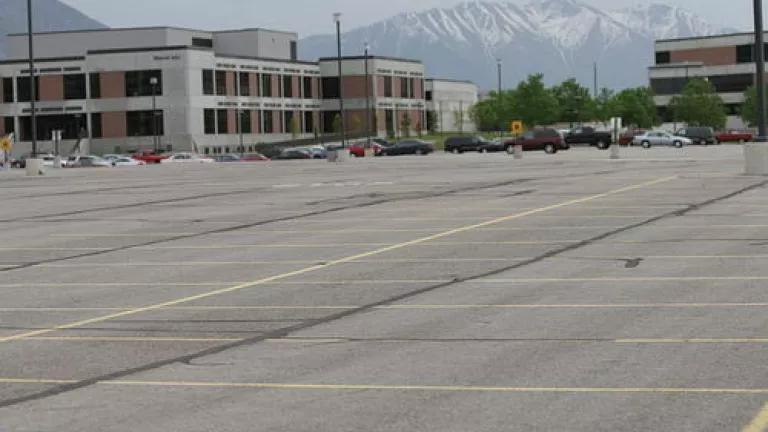
This is another guest blog from Janie Nham (see byline at the bottom):
Economic theory teaches us that when buyers or sellers lack full information and understanding about their choices in a transaction, they make suboptimal decisions. Perhaps one of the best illustrative examples of this economic principle is employer-subsidized parking. Ninety-four percent of individuals who drive to work park in a free parking space. These parking spaces, however, are not truly “free” – their cost is subsidized by employers who redirect wage income towards parking to provide a commuter benefit. In providing this allowance, the true cost of driving to work is concealed, which in turn creates an incentive for workers to drive (and contribute to congestion and pollution). Perhaps it is time to reveal the market price of parking to commuters so that they can make their own decisions.
Currently, the US tax code allows employers to offer their employees up to $250/month for qualified parking. By offering this benefit, employers enjoy tax benefits that are difficult to resist and create a strong financial incentive for them to offer “free” parking at work. In fact, employer-paid parking is the most prevalent fringe benefit offered to workers in the United States. The presence of so many parking spaces, however, encourages driving, as UCLA Professor Donald Shoup eloquently explains:
…employer-paid parking is a matching grant for driving to work: the employer pays part of the cost of commuting by car (the parking cost) only if the employee matches it by paying the rest of the cost (the driving cost). This matching grant arrangement encourages solo driving to work.
Indeed, case studies show that free parking can increase solo driving by 60 percent!
Photo courtesy of uvuphotos
Beyond exacerbating issues of pollution and traffic congestion, a recent study shows that subsidized parking also negates the effects of other incentives to commute by transit, bike, or walking. Published in the Journal for Public Transportation, the study examines the interaction among the multiple transportation incentives (such as transit subsidies, biking and walking facilities, and free parking) when they are jointly offered. The study found that transit, bicycling, and walking benefits were most effective in the absence of driving benefits. When free parking is offered in conjunction with public transportation benefits and bicyclist/pedestrian facilities, the incentive to drive negates the effect of these other incentives.
And in case one still doubts whether the hidden parking costs significantly distort travel behavior, consider the changes in travel preferences after implementation of parking cash-out programs. Cash-out programs are a permutation of the employer parking subsidy program; employers offer commuters the choice to apply the subsidy towards parking or to cash it out. By revealing to workers the true cost of their parking space, workers are able to make more informed decisions about the best transportation choice for them. Case studies show that the program leads to shifts away from driving. In places where cash-outs were implemented, solo driving to work decreased by about 17%, transit use increased by 50%, and walking and biking to work increased by 33%.
Good public policy helps to correct market failures, but with employer-paid parking, it is the policy itself creating a market distortion. In light of concerns about air pollution and climate change, this tax-free parking policy needs to be revisited.
Janie Nham is a sustainability advocate in Washington, DC. This past year, she served as the Washington Area Bicyclist Association’s Policy Fellow and as a citizen advisor to the National Capital Region Transportation Planning Board.
